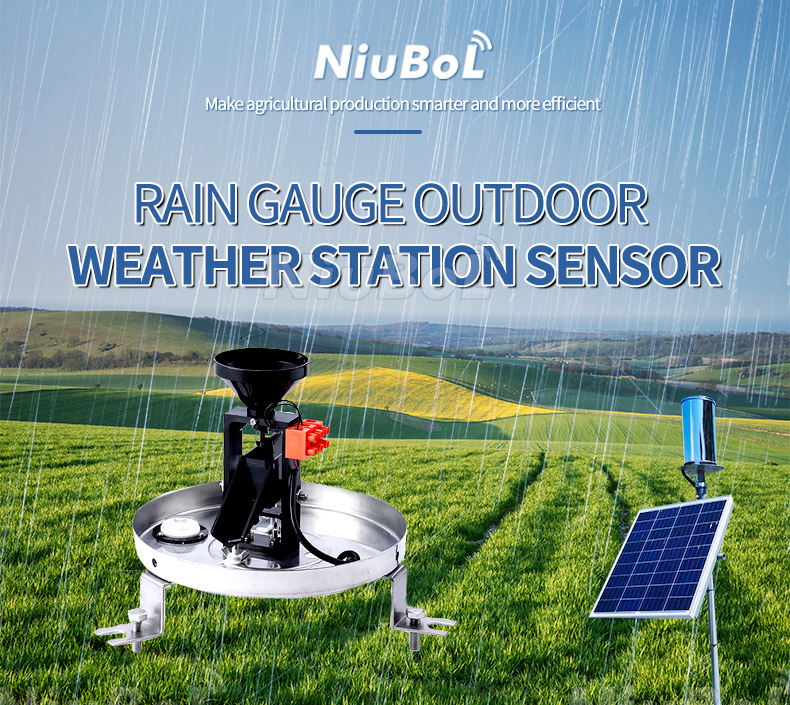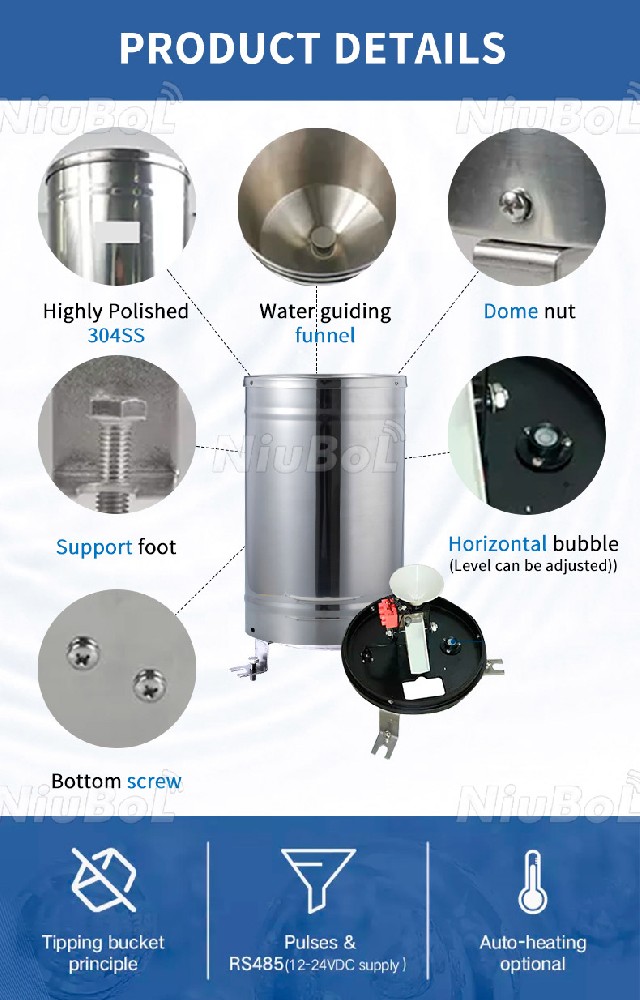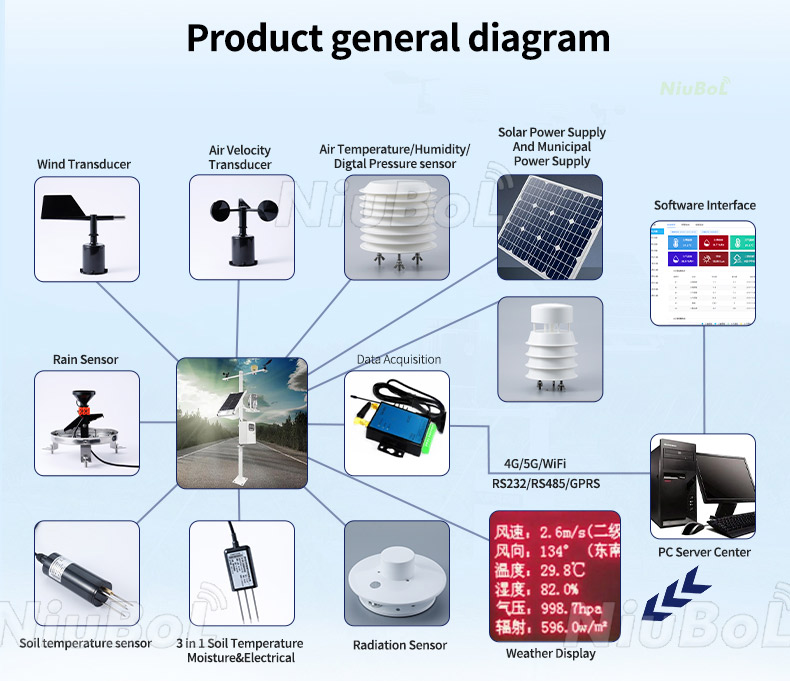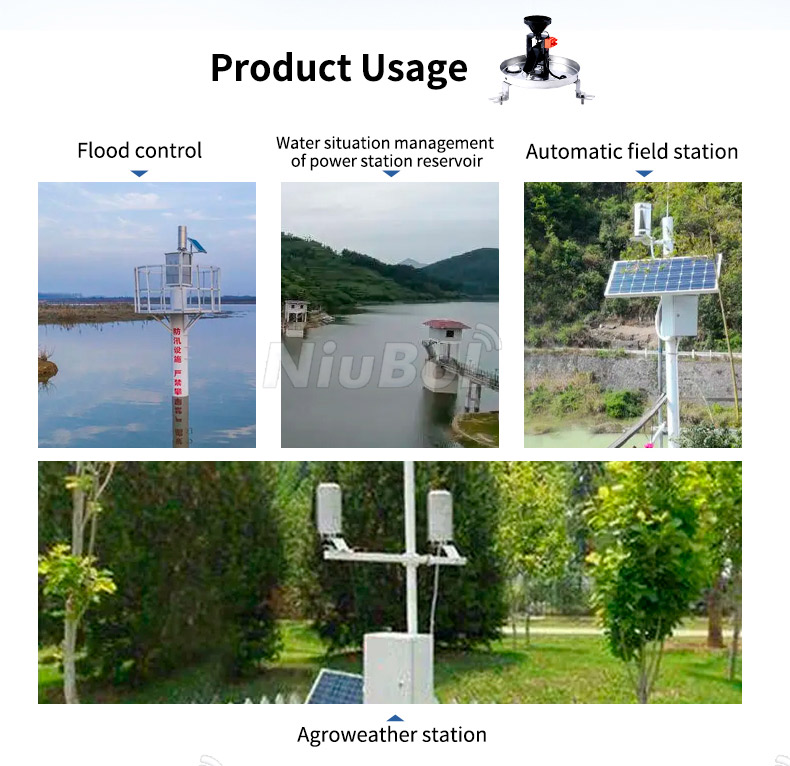

— Blogs —
—Products—
 Consumer hotline +8618073152920
Consumer hotline +8618073152920 WhatsApp:+8615367865107
Address:Room 102, District D, Houhu Industrial Park, Yuelu District, Changsha City, Hunan Province, China
Product knowledge
Time:2024-03-10 17:11:42 Popularity:1906
A weather station with wind speed and rain gauge is a device that measures and records data related to wind speed and rainfall.It is commonly used for weather monitoring and forecasting purposes, as well as for agricultural, environmental, and research applications.Here are the key components and features typically found in such a weather station:
1.Anemometer (Wind Speed Sensor): The anemometer is a sensor that measures the speed and sometimes direction of the wind.It can be a cup anemometer, which uses the principle of conservation of angular momentum to measure wind speed, or an ultrasonic anemometer, which uses sound waves to measure wind velocity.


2.Rain Gauge: rain gauge is a meteorological instrument used to measure the amount of liquid precipitation (usually rainfall) that falls at a specific location over a certain period of time.It is a simple yet essential tool for monitoring and recording rainfall data, which is crucial for various fields such as agriculture, hydrology, weather forecasting, and climate research.
Types of Rain Gauges:
Standard Rain Gauge: The standard rain gauge consists of a cylindrical collector with a wide funnel opening on top to capture rainwater.The collected water is funneled into a graduated measuring tube or container, allowing for easy measurement of rainfall depth.
Tipping Bucket Rain Gauge: This type of rain gauge uses a mechanism with a small bucket that tips when a certain amount of rainwater is collected.Each tip of the bucket corresponds to a specific volume of rainfall, making it easier to automate and record precipitation data.
Weighing Rain Gauge: Weighing rain gauges measure rainfall by detecting the change in weight of the collected water.As rainfall fills the container, the increase in weight is recorded and converted into rainfall depth.

3.Data Logger or Weather Station Console: A data logger or weather station console is the central unit that collects, stores, and displays the data from the wind speed sensor and rain gauge.It provides real-time readings, historical data analysis, and various display options such as graphs, charts, and numerical values.Some advanced models may also offer wireless connectivity or internet access for remote monitoring and data retrieval.
4.Mounting Hardware: Weather stations with wind speed and rain gauge typically come with mounting hardware to ensure proper installation and stability.This includes poles, brackets, or tripods for securely positioning the anemometer and rain gauge at an appropriate height and location.
5.Additional Sensors: Some weather stations may include additional sensors to provide more comprehensive weather data.These may include temperature sensors, humidity sensors, barometric pressure sensors, solar radiation sensors, or UV sensors.Having these additional sensors allows for a broader understanding of weather conditions and enables more accurate weather forecasting.
6.Software and Connectivity: Advanced weather stations may offer software applications or online platforms for data visualization, analysis, and data sharing.They may also support connectivity options such as USB, Wi-Fi, or Ethernet for easy data transfer to external devices or integration with other systems.
To set up a weather station with these capabilities, you would need to purchase or build a weather station that includes both a wind speed sensor and a rain gauge. Modern weather stations often use electronic sensors that can transmit data to a central monitoring station, computer, or smartphone app. This allows for real-time monitoring of weather conditions.

The collected data is crucial for various applications, including meteorology, agriculture, urban planning, and environmental monitoring. For example, wind speed data can help in predicting the strength of storms, while rainfall data is essential for water resource management and irrigation planning.
Related recommendations
Sensors & Weather Stations Catalog
Agriculture Sensors and Weather Stations Catalog-NiuBoL.pdf
Weather Stations Catalog-NiuBoL.pdf
Related products
 Combined air temperature and relative humidity sensor
Combined air temperature and relative humidity sensor Soil Moisture Temperature sensor for irrigation
Soil Moisture Temperature sensor for irrigation Soil pH sensor RS485 soil Testing instrument soil ph meter for agriculture
Soil pH sensor RS485 soil Testing instrument soil ph meter for agriculture Wind Speed sensor Output Modbus/RS485/Analog/0-5V/4-20mA
Wind Speed sensor Output Modbus/RS485/Analog/0-5V/4-20mA Tipping bucket rain gauge for weather monitoring auto rainfall sensor RS485/Outdoor/stainless steel
Tipping bucket rain gauge for weather monitoring auto rainfall sensor RS485/Outdoor/stainless steel Pyranometer Solar Radiation Sensor 4-20mA/RS485
Pyranometer Solar Radiation Sensor 4-20mA/RS485
Screenshot, WhatsApp to identify the QR code
WhatsApp number:+8615367865107
(Click on WhatsApp to copy and add friends)
